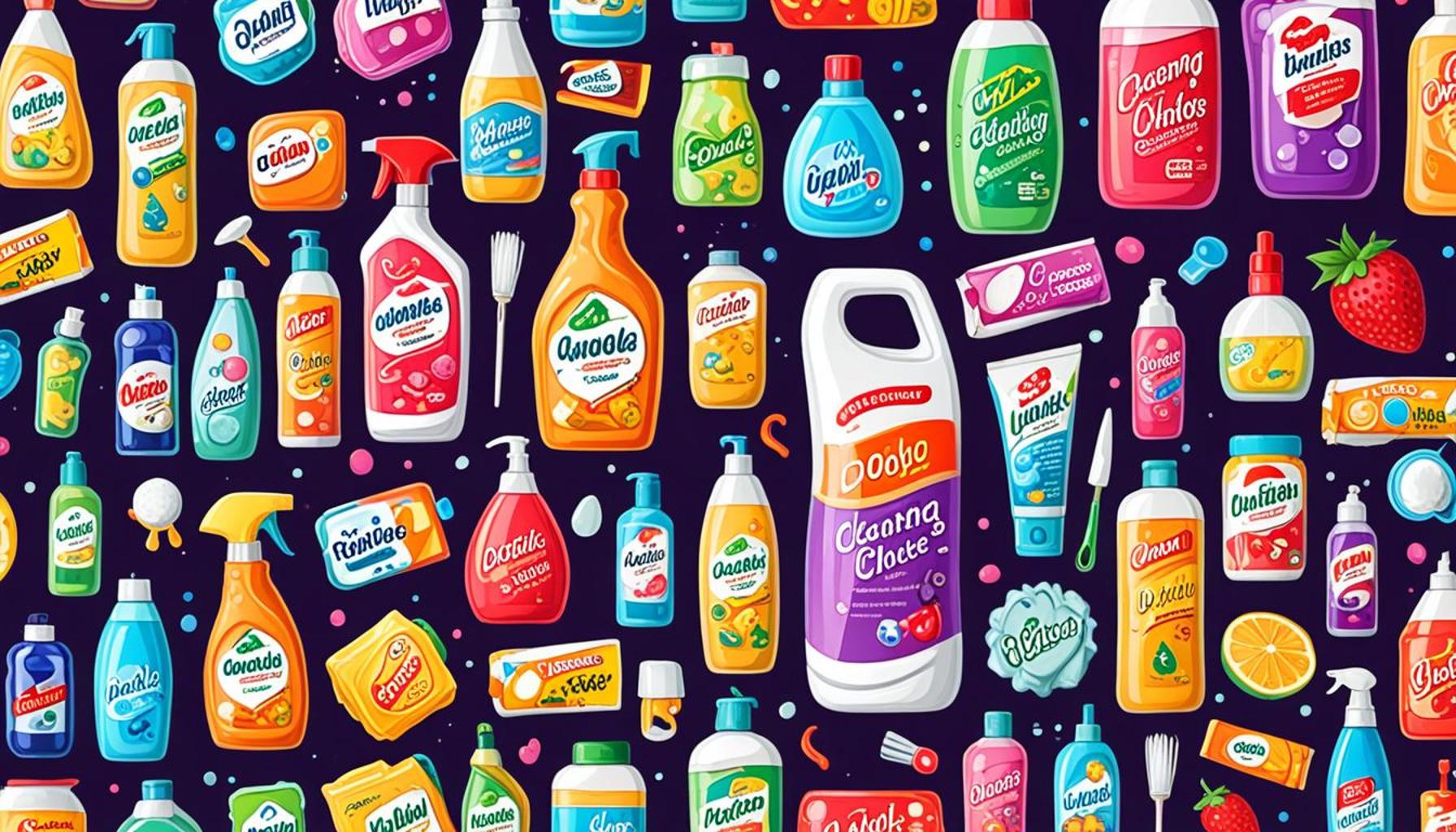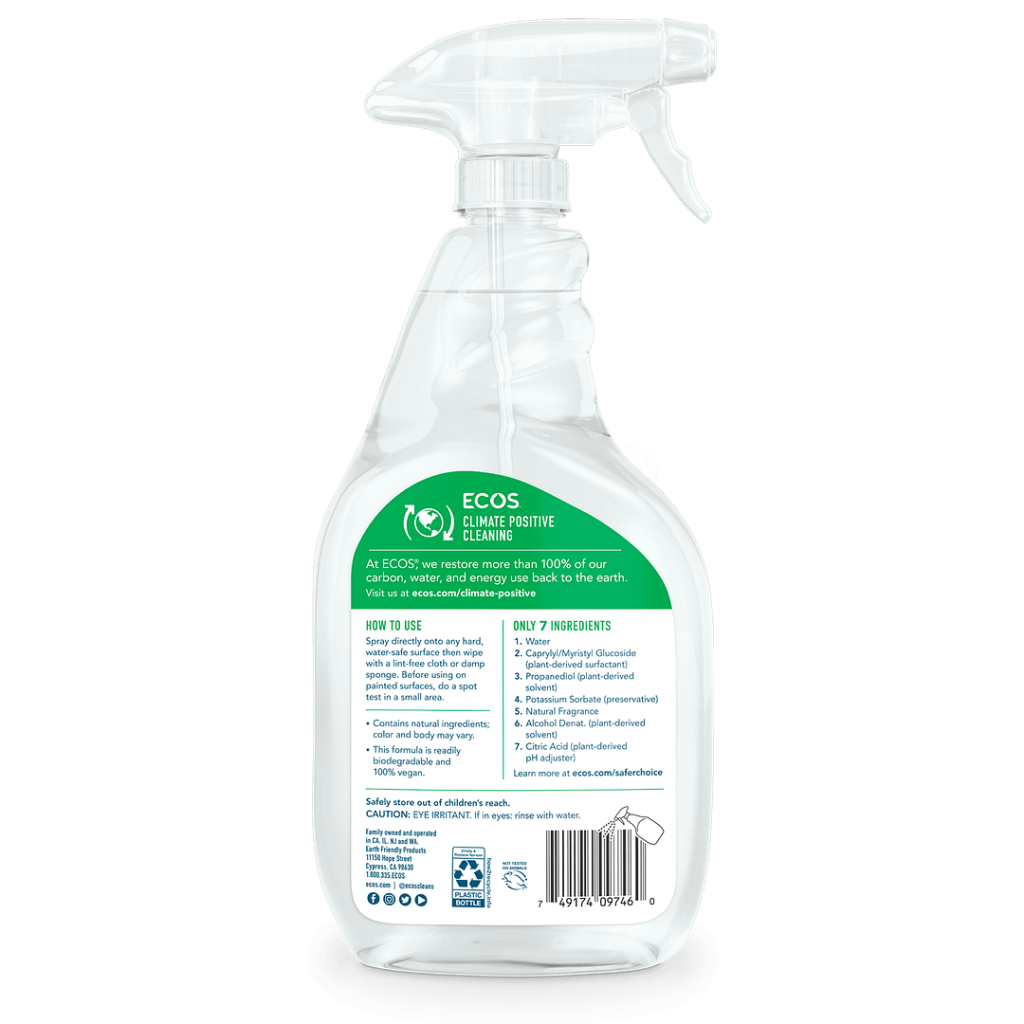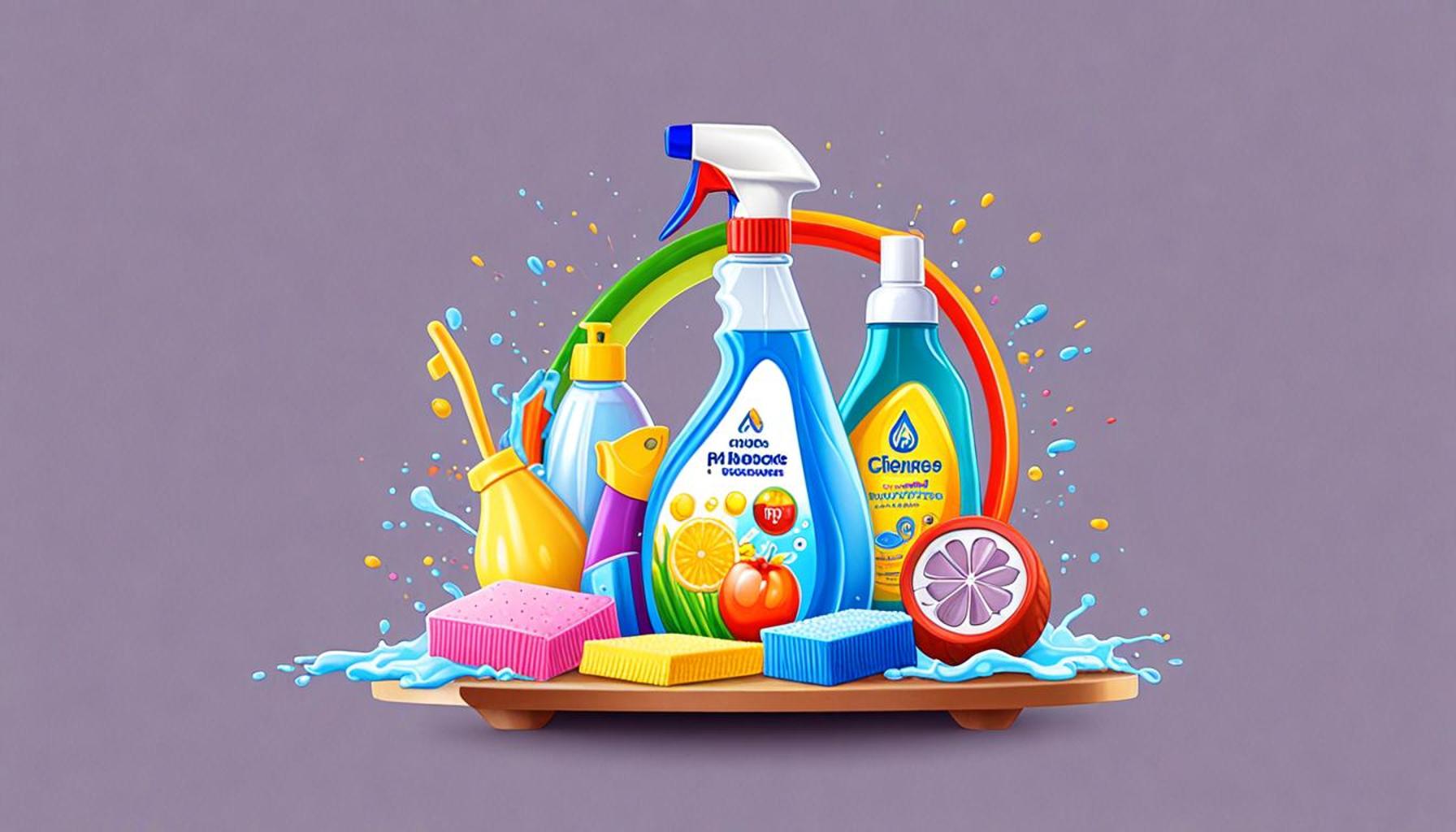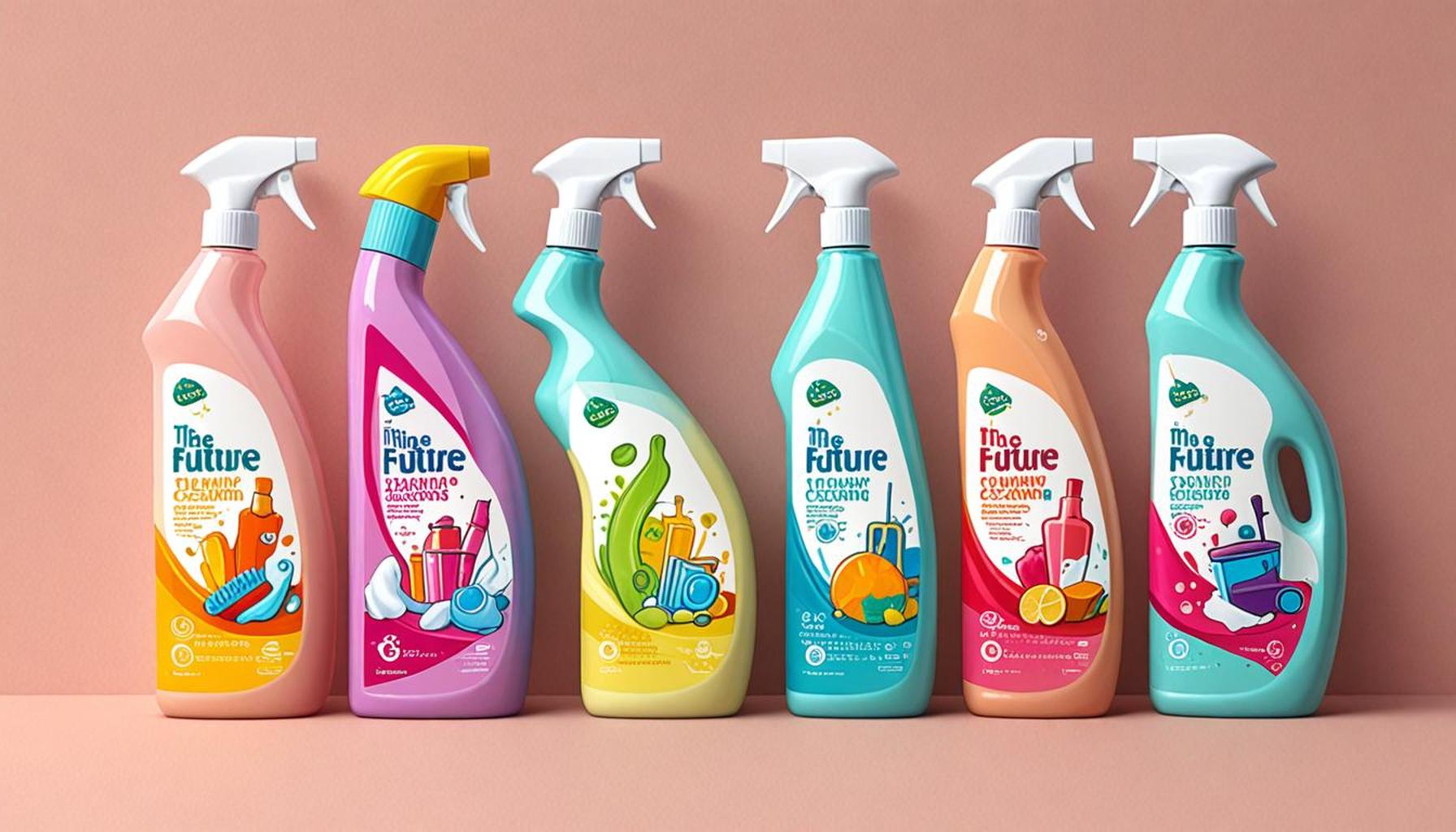Understanding Labels: Decoding Ingredients in Cleaning Products for Safer Choices

Understanding Cleaning Product Ingredients
Everyday cleaning products play a crucial role in maintaining the cleanliness of our homes, yet many of us overlook the ingredients lurking within these convenient bottles. A closer examination of these labels can reveal a wealth of information that impacts not only our own health but also the environment. This understanding is essential as more consumers become health-conscious and environmentally aware.
Cleaning product labels often present a series of complex chemical terms that can bewilder even the most astute shopper. For instance, terms like “phthalates” and “triclosan” might appear benign but are associated with serious health concerns. Such chemicals have been linked to hormone disruption, leading to long-term implications for our well-being and that of our families. By educating ourselves about these substances, we take the first step toward making informed decisions about household products.
Common Concerns Related to Cleaning Products
Awareness of the potential hazards associated with cleaning product ingredients has prompted numerous consumers to dig deeper into what they bring into their homes. Here are some key concerns:
- Harmful Chemicals: Ingredients like ammonia and bleach are common in many cleaning products. While effective for sanitation, they can provoke allergies or respiratory issues, particularly in individuals with preexisting conditions like asthma.
- Toxicity: Chemicals such as ethanol and formaldehyde can pose significant risks to both humans and pets, raising alarms about inhalation or accidental ingestion. Research has shown that exposure to these substances can lead to various health complications.
- Environmental Impact: Ingredients like phosphates found in some detergents can contribute to water pollution, harming aquatic life and ecosystems. Furthermore, volatile organic compounds (VOCs) used in air fresheners can affect indoor air quality and lead to larger environmental concerns.
As consumers become more health-conscious, they are increasingly pressuring manufacturers and retailers to disclose more information regarding product formulations. This transparency is vital as it equips consumers with the necessary knowledge to make safer choices. Initiatives such as the Safer Choice program, endorsed by the U.S. Environmental Protection Agency, encourage companies to create environmentally friendly and safer products.
Ultimately, adopting a habit of reading labels not only leads to healthier choices but also fosters a proactive approach to protecting the environment. Making sense of the complex language found on cleaning product labels can begin a journey toward creating a safer living environment for ourselves and future generations. By exploring the formulations behind our everyday cleaners, we can better appreciate our role in promoting both personal and planetary health.

DIVE DEEPER: Click here to discover the benefits of energy-efficient appliances
Deciphering the Chemical Jargon
Cleaning product labels can appear formidable, cluttered with scientific terminology that might leave consumers feeling overwhelmed. However, understanding these terms is crucial in discerning which products align with our values of safety and sustainability. Since cleaning products are designed for frequent use, it is especially important to grasp what we are inviting into our homes.
Many labels prominently feature terms that might initially sound harmless or commonplace, yet they often hold significant implications for health and safety. Here are several common ingredients that warrant attention:
- Surfactants: These are compounds that help break down dirt and grease. While some surfactants are biodegradable and safer for the environment, others can be synthetic and harmful. Look for ingredients like nonylphenol ethoxylate, which has been linked to aquatic toxicity and hormone disruption.
- Fragrance: Found in a wide array of cleaning products, ‘fragrance’ is often a catch-all term hiding a cocktail of undisclosed chemicals that could contribute to allergies, asthma, or skin irritations. The International Fragrance Association has called for transparency, advocating that consumers deserve to know what they are inhaling.
- Preservatives: Commonly found in cleaning products to prolong shelf life, some preservatives, like methylisothiazolinone, have raised red flags due to their potential to cause skin irritations and allergic reactions.
- pH Balancers: Ingredients like citric acid or sodium hydroxide are used to adjust acidity levels for effective cleaning. While natural acids like citric are generally safe, synthetic versions may pose health risks.
Awareness about these common ingredients is the first step in healthier cleaning habits. Research indicates that certain cleaning agents can release harmful fumes especially when mixed, leading to unexpected chemical reactions that jeopardize indoor air quality. For instance, combining bleach with ammonia generates toxic chloramine vapors that can cause respiratory distress. This knowledge highlights the importance of not only reading labels but also understanding the consequences of product interactions.
The Shift Towards Safer Ingredients
In response to consumer demand for safer cleaning options, many brands are reformulating their products. Initiatives encouraging greener chemistry have emerged, promoting safer alternatives that do not compromise cleaning efficacy. Brands are increasingly opting for plant-based or naturally derived ingredients, which often provide a more environmentally friendly option without sacrificing performance.
Moreover, certifications such as Green Seal and EcoLogo serve as trustworthy indicators of products meeting specific environmental and health standards. By seeking out these certifications, consumers can more confidently make choices that benefit both their homes and the planet.
In essence, the journey towards understanding cleaning product labels requires curiosity and diligence. As more people begin to educate themselves about the implications of these ingredients, we collectively foster a movement toward healthier living environments. The act of scrutinizing labels not only empowers individuals but contributes significantly to a broader cultural shift in demand for safer products.
| Category | Description |
|---|---|
| Ingredient Transparency | Understanding cleaning product components empowers consumers to make informed choices. |
| Health Awareness | Identifying harmful chemicals can reduce exposure and enhance household safety. |
| Environmental Impact | Choosing eco-friendly products contributes to sustainable living and reduces toxins. |
| Informed Purchasing | Understanding labels leads to smarter purchases, optimizing value and effectiveness. |
By decoding ingredients in cleaning products, we can foster a safer household environment. Ingredient transparency is crucial as many consumers remain unaware of what they are applying during routine cleaning. Products often contain chemicals that may pose risks, making it imperative to read labels diligently. Additionally, becoming aware of harmful chemicals not only protects one’s health but also enhances overall well-being.Moreover, selecting eco-friendly alternatives reflects a commitment to reducing the environmental impact of daily cleaning practices. This conscious choice contributes to a larger movement towards sustainability, as it reduces the number of toxins entering the ecosystem. Informed purchasing is another significant advantage, as understanding labels allows consumers to make decisions based on value and effectiveness, ensuring they choose the right products for their needs. This awareness leads to a broader knowledge base and promotes safer and more responsible cleaning habits.
DISCOVER MORE: Click here to learn about the benefits of energy-efficient appliances
Navigating Product Labels with Confidence
As the conversation about consumer health and environmental impact gains traction, it becomes essential to scrutinize not just what is in our cleaning products, but also how these products are marketed. Manufacturers often employ tactics that may obscure the true nature of their offerings, making it crucial for consumers to develop a keen eye for distinguishing genuine safe choices from mere marketing ploys.
One aspect worth noting is the concept of “natural” or “eco-friendly” claims. Unfortunately, the lack of strict regulations around these terms means that they can be applied liberally. For instance, a product branded as ‘natural’ may still contain synthetic ingredients that have not been explicitly labeled. Therefore, it is necessary to delve deeper by looking at the ingredient list rather than relying solely on the front of the package. The Environmental Working Group (EWG) has created a comprehensive database for consumers, rating thousands of household products based on their safety, which can serve as a valuable resource in this investigative journey.
Additionally, the use of biodegradable claims requires careful examination. A product advertised as biodegradable might only break down under specific conditions, potentially retaining harmful residues thereafter. This is particularly relevant for consumers who primarily utilize cleaning agents in standard residential environments. A more appropriate alternative may be to seek labels that explicitly state the timeframe for biodegradation and under which conditions it occurs. The distinction can significantly influence long-term sustainability outcomes.
Ingredient Transparency and Consumer Demand
In recent years, consumer demand for transparency has prompted several manufacturers to re-evaluate their formulation practices. As a result, we see brands championing ingredient transparency by openly sharing complete formulations on their websites. This trend echoes the broader movement toward cleaner, greener consumer goods—a vital shift that offers peace of mind as households prioritize safety.
To illustrate, some brands are now opting for plant-derived enzymes as the main cleaning agents. These enzymes can effectively break down stains and microbes without the harsh aftermath associated with traditional chemical cleaners. For example, a blue agave-based cleaner can replace harsh bleaches while maintaining efficacy. This evolution in product formulation aligns with consumers’ growing preference for eco-friendly, yet effective, cleaning agents.
Further encouraging this movement are innovative startups that emphasize sustainability throughout their product lifecycle. Companies focusing on refill programs, for instance, enable consumers to reuse containers, thus significantly reducing plastic waste. These programs often highlight refillable options for popular cleaning supplies, effectively encouraging a shift away from single-use packaging that clogs landfills.
The digital age also aids today’s consumers; forums, blogs, and social media platforms have become vibrant spaces for sharing knowledge about safer cleaning choices. These discussions can lead to invaluable insights, revealing lesser-known yet effective alternatives that may not be featured in mainstream advertising. Participating in these communities expands consumers’ horizons, fostering awareness and encouraging healthier cleaning habits.
The interplay of ingredient transparency, consumer demand, and advocacy for sustainable practices can ultimately reshape the cleaning product landscape. By making informed choices, consumers not only enhance their personal environments but also create a ripple effect that pushes industries toward accountability and innovation, leading to a collective gain in health and environmental stewardship.
DISCOVER MORE: Click here to learn about biodegradable cleaning tools
Empowering Change Through Knowledge
As the journey of understanding cleaning product labels comes to a close, it becomes evident that informed consumer choices are pivotal in shaping a safer, healthier environment. By taking the time to decode ingredients and scrutinize claims, shoppers can confidently navigate the myriad options available in today’s market. The growing demand for transparency is prompting manufacturers to reconsider their practices, moving towards more sustainable and genuinely safe solutions.
The importance of ingredient transparency cannot be overstated. With new developments in cleaning technologies, such as the rise of plant-derived enzymes and refill programs, consumers are presented with innovative alternatives that lessen our impact on the planet. This shift not only promotes healthier households but also fosters a culture of accountability among brands striving to align with consumer values.
As we engage in community discussions and leverage resources like the Environmental Working Group, we cultivate an informed society that advocates for greater safety standards. By becoming more astute in our purchasing decisions, we are not merely cleaning our homes; we are actively contributing to a larger movement toward environmental stewardship and health awareness.
In conclusion, the power of choice lies in our hands. By prioritizing knowledge and transparency, we set a precedent for industry innovation and healthier living, making every purchasing decision an opportunity for positive impact. Let us continue to challenge the status quo, steering the market toward products that prioritize our health and the planet’s well-being.


